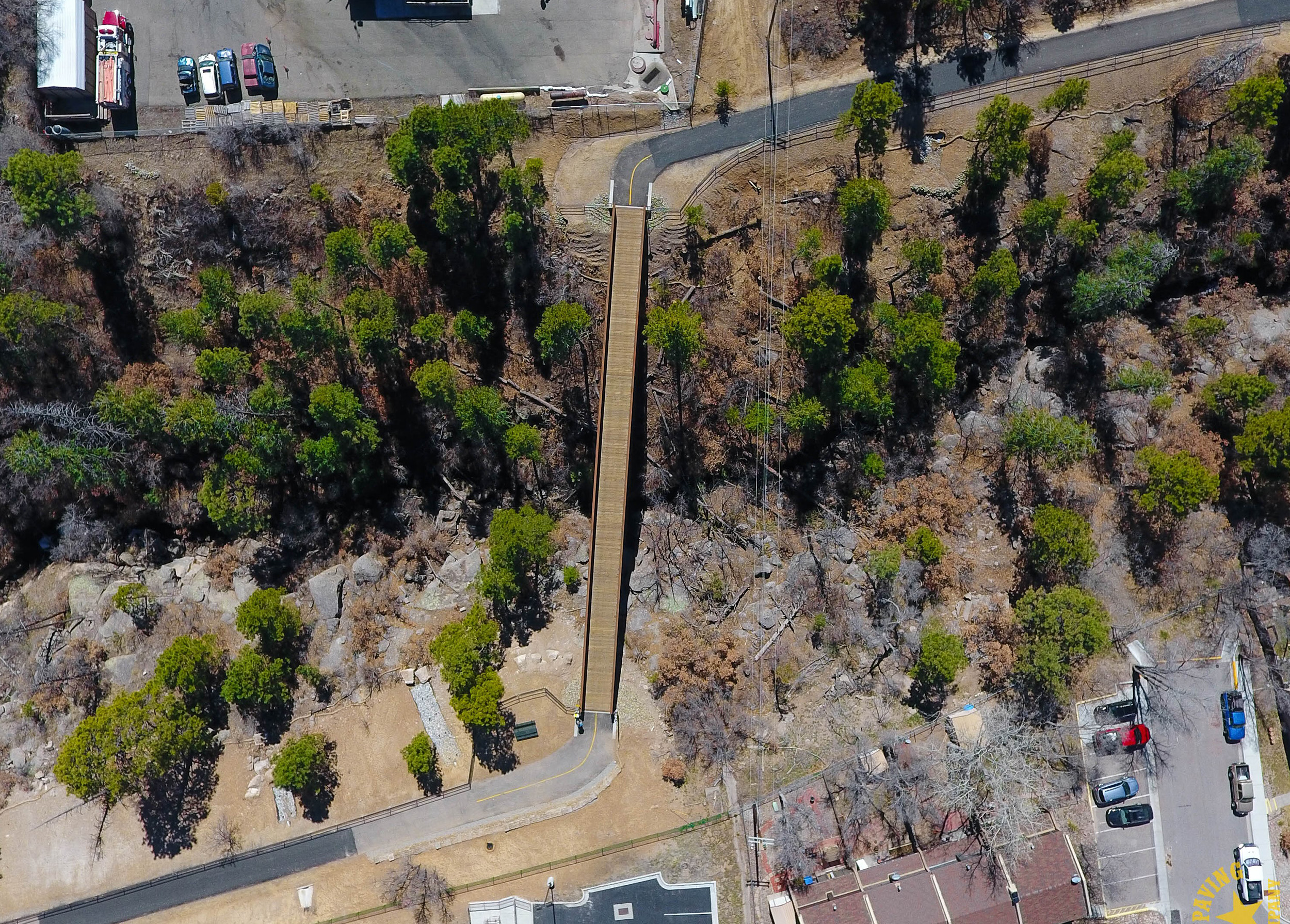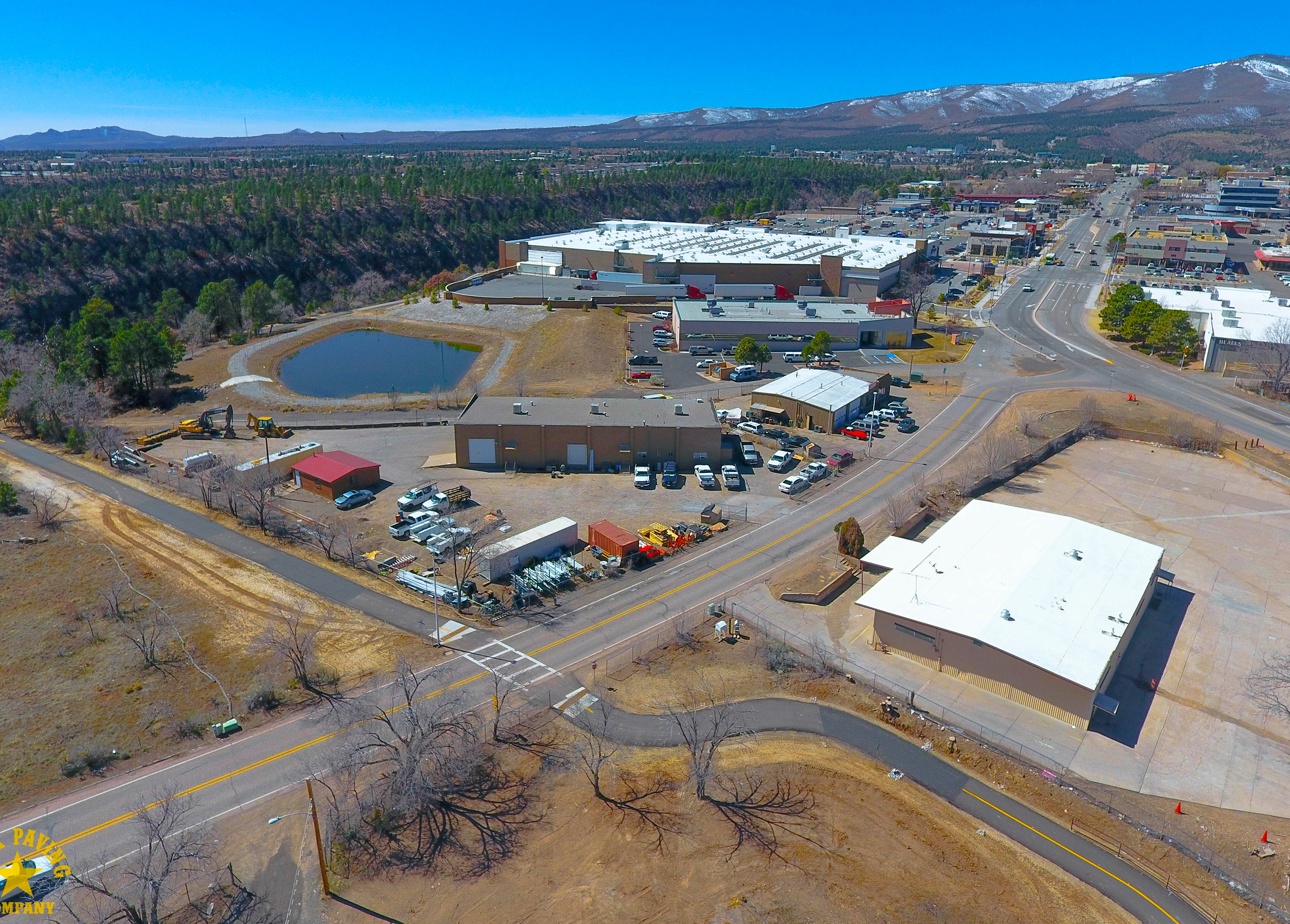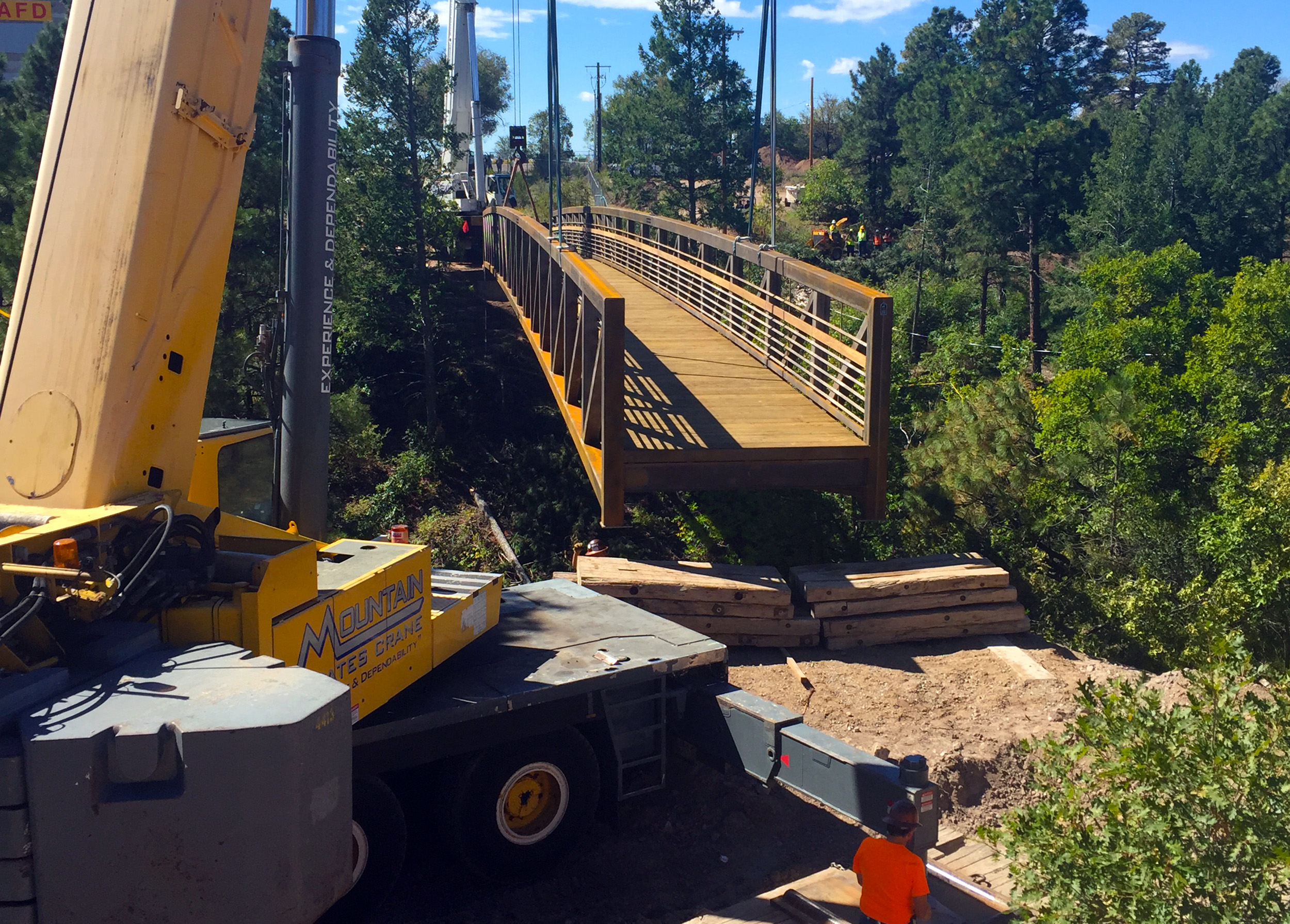Los Alamos County Canyon Rim Trail
Wilson & Company provided Los Alamos County (LAC), NM, with the trail design, retaining wall layout, bridge selection, phasing plans, and cost estimates for the Canyon Rim Trail Pedestrian Bridge Design. The second phase of the Los Alamos Canyon Rim Trail Project consisted of the study, design, and construction of a 180-ft prefabricated steel truss bridge, retaining walls up to 18-ft in height, and approximately 2800 lineal feet of a 10-ft-wide asphalt path. In the study phase, three separate alignments were reviewed to determine the most cost-effective alternative for LAC to fit within their budget. Public involvement was sought during presentations to the County Council, Parks and Recreation Board, and Transportation Board. When a preferred alternative was selected, Wilson & Company began the preliminary design, working through the local government process with the New Mexico Department of Transportation (NMDOT) and Federal Highway Administration (FHWA). Once the plans and bid documents were complete and all certifications (ROW, utility, environmental, ITS, and railroad) were obtained from NMDOT and FHWA, the plans were bid. The contract was awarded in April 2016, with construction following shortly after. The project was completed on time and within budget.
The project began with a very challenging existing site terrain. The selected alignment connected to previous phases of the Canyon Rim Trail but was along the side of DP Canyon. Early in the study process, it was known that the project would have several retaining walls and constructability concerns. The existing terrain was not only a challenge for design but would limit the size and type of equipment available to the contractor for construction. The design had to take these factors into account.
The second part of the constructability was the placement of the 180-ft pedestrian bridge. Due to the site location and existing terrain, the bridge would need to be brought in from one side of the Canyon and swung into place. It was determined that a crane would need to be on the north and south sides of the Canyon to pick up the bridge and “swing” it into place. The cranes worked in unison to set the bridge on the abutments. During construction, the contractor utilized three cranes to erect the bridge fully. It was also recommended that the retaining wall be strong enough to support the weight of the crane, as it would need to drive over the wall location to get into position to set the bridge. Three cranes were used to fully erect the bridge. This project used an innovative construction approach in the design process to ensure the project’s constructability.
Wilson & Company’s services on the project included planning documents, utility design, roadway/trail design, and construction inspection.




